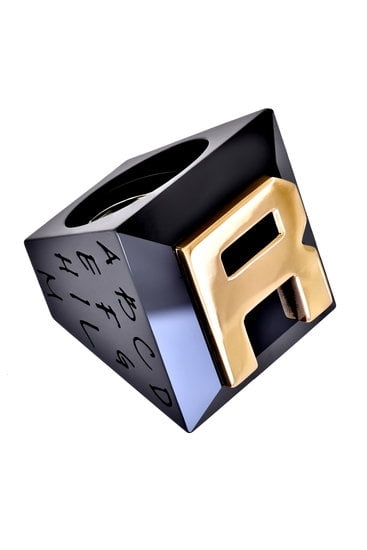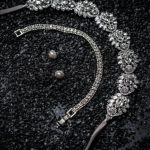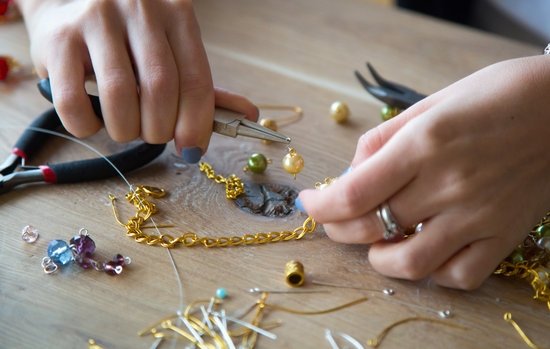The value of gold jewelry is determined by a variety of factors that can make pricing a complex task. Understanding how to price gold jewelry involves not only assessing the current market trends and purity of the gold, but also considering the craftsmanship, design, and type of gold used. This article will explore the different elements that impact the pricing of gold jewelry and provide valuable tips for accurately pricing gold jewelry for resale.
Factors such as market trends, type of gold, purity, and craftsmanship all play a significant role in determining the value of gold jewelry. Being able to accurately assess these factors is essential for anyone looking to buy or sell gold jewelry. Additionally, understanding these elements can help avoid common mistakes when pricing gold jewelry.
In this article, we will delve into the intricacies of pricing gold jewelry. From discussing the impact of market trends on pricing to providing tips for accurately assessing its value for resale, readers will gain a comprehensive understanding of how to effectively price gold jewelry. Whether you are buying or selling gold jewelry, having this knowledge is invaluable in navigating this specialized market.
Factors That Impact the Pricing of Gold Jewelry
When it comes to pricing gold jewelry, there are several key factors that come into play. Understanding these factors is crucial for accurately determining the value of gold jewelry, whether you’re looking to sell or buy.
Some important factors that impact the pricing of gold jewelry include:
- Gold Content: The purity of the gold used in the jewelry is a significant factor in determining its price. Pure 24 karat gold will typically command a higher price than jewelry made with lower karatage.
- Market Demand: Like any other commodity, the demand for gold jewelry can have a significant impact on its pricing. Economic conditions, consumer preferences, and even fashion trends can all influence demand for gold jewelry.
- Craftsmanship and Design: The intricacy and quality of the craftsmanship, as well as the overall design of the piece, can also affect its price. Well-crafted and unique pieces are likely to be priced higher than mass-produced or simpler designs.
- Market Trends: Keeping an eye on market trends is essential when pricing gold jewelry. Fluctuations in the price of gold itself, changes in consumer preferences, and even geopolitical events can all impact the pricing of gold jewelry.
Understanding these factors and staying abreast of market trends is crucial when determining how to price gold jewelry accurately. By considering these elements, sellers can ensure they are getting fair value for their pieces, while buyers can make informed decisions about their purchases.
Market Trends and Their Impact on Gold Jewelry Pricing
Market trends play a significant role in determining the price of gold jewelry. Understanding these trends can help both buyers and sellers make informed decisions about pricing. Here are some key market trends that impact the pricing of gold jewelry:
1. Economic Conditions: The state of the economy, including factors such as inflation, interest rates, and unemployment, can influence the price of gold. During times of economic uncertainty, investors often turn to gold as a safe haven, driving up demand and prices.
2. Supply and Demand: Like any other commodity, the price of gold is influenced by supply and demand dynamics. When the demand for gold jewelry outweighs the available supply, prices tend to rise. Conversely, when there is an oversupply of gold jewelry in the market, prices may fall.
3. Geopolitical Events: Political instability, conflicts, or changes in government policies can have a direct impact on the price of gold. Investors often view gold as a hedge against geopolitical risks, leading to increased demand and higher prices during turbulent times.
It’s important for anyone involved in buying or selling gold jewelry to stay informed about these market trends to make well-informed pricing decisions. By keeping an eye on economic conditions, supply and demand dynamics, and geopolitical events, individuals can better understand how these factors impact the value of their gold jewelry.
Additionally, it’s essential to work with reputable sources or consult with experts who specialize in evaluating market trends’ impact on pricing gold jewelry accurately.
Different Types of Gold and Their Pricing Differences
Gold jewelry comes in different types depending on the purity and alloy mixture. Each type of gold has its own pricing differences based on these factors, making it important to understand the distinctions when pricing gold jewelry.
Yellow Gold
Yellow gold is the most common type of gold used in jewelry. It is typically mixed with copper and silver to make it more durable for everyday wear. The purity of yellow gold is measured in karats, with 24k being the purest form. When pricing yellow gold jewelry, the higher the karat, the higher the price due to its increased purity.
White Gold
White gold is created by mixing yellow gold with white metals such as nickel or palladium and then plating it with rhodium to give it a shiny finish. The price difference between white gold and yellow gold comes from the additional metals used in its composition and the cost of periodic re-plating to maintain its lustrous appearance.
Rose Gold
Rose gold gets its pink hue from a higher proportion of copper in the alloy. This type of gold has gained popularity in recent years due to its romantic and vintage look. The pricing difference for rose gold jewelry can be attributed to its unique color and the additional copper content.
Understanding these different types of gold and their pricing differences is essential when determining how to price gold jewelry accurately for resale or appraisal purposes. Factors such as purity, alloy mixture, and market demand all play a significant role in establishing the value of each piece.
The Importance of Assessing the Purity of Gold in Jewelry
Gold jewelry is a valuable and timeless investment, but its worth depends on various factors, including its purity. Assessing the purity of gold in jewelry is crucial in determining its value and pricing it accurately.
Understanding Gold Purity
The purity of gold jewelry is measured in karats, which indicates the percentage of pure gold it contains. Pure gold is 24 karats, but it is too soft for making jewelry. Therefore, gold jewelry is typically mixed with other metals to increase its durability. Common purities for gold jewelry are 14k, 18k, and 22k, each representing a different percentage of pure gold.
Impact on Pricing
The purity of gold in jewelry has a direct impact on its pricing. Generally, the higher the karat weight, the more valuable the piece. This means that 18k gold jewelry will be more expensive than 14k or 10k pieces because it contains a higher percentage of pure gold.
Assessing Purity
It is essential to verify the purity of gold jewelry before pricing it for resale. This can be done by looking for hallmark stamps that indicate the karat weight or by using acid testing kits to confirm its purity. Ensuring accurate assessment of purity is crucial in determining the value of gold jewelry and setting an appropriate price.
The Role of Craftsmanship and Design in Pricing Gold Jewelry
Craftsmanship and design play a significant role in the pricing of gold jewelry. The artistry and creativity that goes into creating a piece of jewelry can greatly impact its value. When determining the price of gold jewelry, it is essential to consider the intricacy of the design, the level of detail, and the skill involved in crafting the piece.
Highly detailed and unique designs are often more valuable than mass-produced or generic pieces. Jewelry that showcases exceptional craftsmanship, such as intricate filigree work or elaborate settings for gemstones, can command higher prices in the market. Additionally, custom-made or bespoke gold jewelry tends to be priced higher due to its personalized nature and the effort put into creating a one-of-a-kind piece.
In addition to craftsmanship, the overall design and aesthetics of gold jewelry influence its pricing. Contemporary and innovative designs may appeal to a different market segment compared to traditional or vintage styles. Trends in fashion and consumer preferences also play a role in determining the value of gold jewelry designs.
| Craftsmanship and Design | Impacts on Pricing |
|---|---|
| Intricate designs and details | Higher value in the market |
| Custom-made or bespoke jewelry | Priced higher due to personalization |
| Trends in fashion and consumer preferences | Affecting the perceived value of designs |
Tips for Accurately Pricing Gold Jewelry for Resale
When it comes to accurately pricing gold jewelry for resale, there are several factors that you need to take into consideration. The first step is understanding the value of the gold itself. Gold is typically priced per gram, and the price can fluctuate based on market conditions. It’s important to stay updated on the current market value of gold in order to accurately price your jewelry.
In addition to the current market value of gold, other factors can impact the pricing of gold jewelry. These include the purity of the gold, the craftsmanship and design of the piece, and any additional gemstones or materials used. All of these elements contribute to the overall value of the jewelry, so it’s important to assess each factor carefully.
One common mistake to avoid when pricing gold jewelry for resale is not accurately assessing the purity of the gold. The purity of gold is measured in karats, with 24 karat being considered pure gold.
When pricing your jewelry, it’s crucial to know the karat weight of your pieces in order to accurately determine their value. Additionally, understanding different types of gold (such as white or rose gold) and their pricing differences is also important in ensuring accurate pricing for resale.
Lastly, it’s essential to consider any market trends that may impact the pricing of your gold jewelry. By staying informed about current trends and demand for certain styles or designs, you can more accurately price your jewelry for resale.
| Factors | Importance |
|---|---|
| Current market value | Fluctuates based on market conditions |
| Purity of gold | Measured in karats |
| Craftsmanship and design | Contributes to overall value |
Common Mistakes to Avoid When Pricing Gold Jewelry
When it comes to pricing gold jewelry, there are several common mistakes that both sellers and buyers should avoid. One of the most common mistakes is not considering the current market value of gold. The price of gold fluctuates daily based on supply and demand, so it’s crucial to stay updated on the current market trends when pricing gold jewelry.
Additionally, many people make the mistake of not considering the purity of the gold in the jewelry piece. The higher the purity of gold, the higher its value, so it’s important to accurately assess the karat of the gold in order to price it correctly.
Another mistake to avoid when pricing gold jewelry is not accounting for craftsmanship and design. The design and craftsmanship of a piece can greatly impact its value, so it’s essential to take these factors into consideration when determining a fair price for gold jewelry. Furthermore, some sellers make the mistake of overvaluing their gold jewelry without taking into account any wear and tear. The condition of the piece, including any scratches or damage, should be reflected in its price.
Finally, one common mistake when pricing gold jewelry for resale is not understanding different types of gold and their pricing differences. For example, white gold and rose gold may have different values than traditional yellow gold due to their alloy compositions.
It’s important to educate oneself on these differences in order to accurately price each type of gold jewelry. By avoiding these common mistakes and following best practices for pricing, both buyers and sellers can ensure fair transactions and accurate valuations for their gold jewelry.
Conclusion
In conclusion, pricing gold jewelry requires a delicate balance of art and science. Understanding the value of gold jewelry involves considering factors such as purity, weight, market trends, craftsmanship, and design. It is important to assess the purity of gold in jewelry accurately as this greatly impacts its value. Additionally, the different types of gold, whether it be 24K, 18K or 14K, also play a significant role in pricing differences.
Market trends can have a substantial impact on the pricing of gold jewelry. As with any commodity, the price of gold can fluctuate based on supply and demand, economic conditions, and geopolitical events. Keeping abreast of these market trends is essential for accurately pricing gold jewelry for resale.
Craftsmanship and design also play a crucial role in determining the value of gold jewelry. The intricacy and quality of the workmanship involved can greatly influence its price. When pricing gold jewelry for resale, it’s important to take all these factors into account to ensure a fair price for both buyers and sellers. Overall, understanding how to price gold jewelry involves a multifaceted approach that balances both artistry and practicality.
Frequently Asked Questions
What Is a Fair Markup for Gold Jewelry?
A fair markup for gold jewelry typically depends on various factors such as the cost of materials, craftsmanship, and market demand. Generally, a markup of around 100% to 300% is common in the jewelry industry. This allows the retailer to cover their expenses and make a reasonable profit while remaining competitive in the market.
What Is the Formula for Calculating Gold Number?
The formula for calculating gold purity, also known as its karat number, involves dividing the carat weight of pure gold by the total carat weight of the item. This calculation results in a decimal number which can then be converted to a percentage by multiplying it by 100.
For example, 18 karat gold (stamped as 18k) contains 75% pure gold because 18 divided by 24 equals 0.75 or 75%.
How Do You Calculate 14k Gold?
To calculate 14k gold, you would apply the same formula used for determining any gold’s purity. In this case, when you divide 14 (the karat weight representing 58.3% pure gold content) by 24, you get approximately 0.583 as a decimal or about 58.3% when converted to a percentage.
Therefore, when an item is stamped with “14k,” it indicates that it contains approximately 58.3% pure gold.

Welcome to my jewelry blog! My name is Sarah and I am the owner of this blog.
I love making jewelry and sharing my creations with others.
So whether you’re someone who loves wearing jewelry yourself or simply enjoys learning about it, be sure to check out my blog for insightful posts on everything related to this exciting topic!





